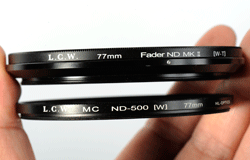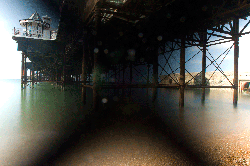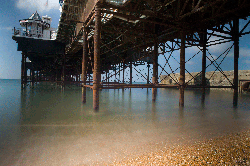frozentomtom>>> No worries Bro. Just sharing.
2. As for the "180deg for your shutter speed" rule, on a bright sunny day, if I shoot at 24fps, shutter speed at 1/50, the video would be overexposed. I'm thinking to get a ND filter, either Hoya ND4, ND8 or ND16, which would be more versatile? which you recommend?
Bro, I am using ND Fader with multiple stops. If I am not wrong, ND with numbers behind, they are fixed which you would not want. You got no room to play. I would recommend Hercules the one I am using currently. But once I got more experienced and money, I would buy the LCW and the HOYA HD versions. They cost a couple of hundreds. Especially if I were to shoot paintball, I need to invest on the good quality ND Fader. Reasons, a paintball videographer in US got his lens mini-smashed and scratches because he was using cheaper ND Fader, which could not take the paintball hits. I am not saying cheap is not good. Cheap is good and practical for practising and normal shoot as long as it gives the quality that you want.
3. Did you use ND filters for that video or other videos?
Usually I only use my ND Fader for outdoor and sunny day. For indoor, I have yet to try. I will soon in the next coming weeks. We shall see how it goes.
2. As for the "180deg for your shutter speed" rule, on a bright sunny day, if I shoot at 24fps, shutter speed at 1/50, the video would be overexposed. I'm thinking to get a ND filter, either Hoya ND4, ND8 or ND16, which would be more versatile? which you recommend?
Bro, I am using ND Fader with multiple stops. If I am not wrong, ND with numbers behind, they are fixed which you would not want. You got no room to play. I would recommend Hercules the one I am using currently. But once I got more experienced and money, I would buy the LCW and the HOYA HD versions. They cost a couple of hundreds. Especially if I were to shoot paintball, I need to invest on the good quality ND Fader. Reasons, a paintball videographer in US got his lens mini-smashed and scratches because he was using cheaper ND Fader, which could not take the paintball hits. I am not saying cheap is not good. Cheap is good and practical for practising and normal shoot as long as it gives the quality that you want.
3. Did you use ND filters for that video or other videos?
Usually I only use my ND Fader for outdoor and sunny day. For indoor, I have yet to try. I will soon in the next coming weeks. We shall see how it goes.
Last edited:





